Finding a high-quality bicycle frame without spending a fortune is a top priority for many cycling enthusiasts. Whether you're building a bike from scratch or upgrading an old one, the frame is the foundation of your ride, influencing its performance and durability. Fortunately, there are strategies to find affordable yet quality frames that meet your needs. Here’s how you can get started without stretching your budget.
1. Know What You Need
Start by understanding your cycling needs. Are you a road cyclist, mountain biker, or someone who enjoys leisurely rides? Knowing the primary use will help you focus on the right type of frame. For instance, road bike frames are designed for speed and efficiency, while mountain bike frames are built for durability and control on rough terrains.
2. Focus on Frame Material
Frame material significantly impacts both performance and price. Common materials include aluminum, steel, titanium, and carbon fiber. Each has its pros and cons:
- Aluminum: Lightweight and affordable, suitable for beginners and casual riders.
- Steel: Known for its durability and smooth ride quality, though heavier.
- Titanium: Offers strength and lightness but is typically more expensive.
- Carbon Fiber: Lightweight and strong, ideal for performance-focused cyclists.
Trifox Bike offers carbon road bike frames at a fraction of the usual cost, providing an excellent option for those seeking lightweight and durable frames without the premium price tag.
3. Look for Discounts and Deals
One way to save money is by shopping during sales or looking for discounts on last season's models. Trifox Bike, for example, often offers significant discounts on their carbon road bike frames, such as the X8QR and X12 models, which are available at over 50% off with free shipping on orders over $50.
4. Compatibility with Components
Ensure the frame is compatible with your existing or intended components. Check the frame’s specifications, such as wheel size, brake type (disc or rim), and bottom bracket type. Trifox provides detailed information on their frames, making it easier for you to verify compatibility.
5. Read Reviews and Get Recommendations
Before finalizing your purchase, read customer reviews and seek recommendations from fellow cyclists. This can provide insights into the frame's performance and durability. Trifox Bike's website features reviews for each frame, helping you make an informed decision.
6. Consider Buying Direct
Buying directly from manufacturers like Trifox can often result in better deals, as it eliminates retailer markups. This approach can offer better value for your money while still providing a high-quality product.
7. Don't Sacrifice Quality for Price
While it's essential to stay within your budget, compromising too much on quality can lead to higher costs down the line due to maintenance or replacement needs. Look for frames that balance affordability with durability and performance.
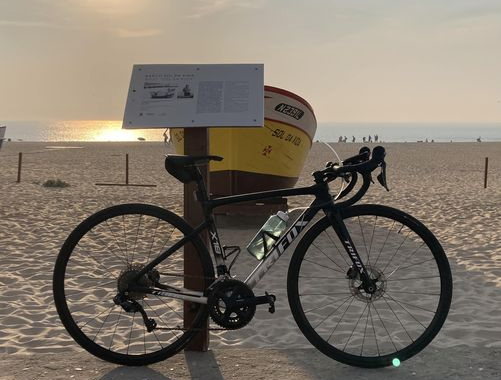
Conclusion
Finding a quality bicycle frame without breaking the bank is achievable with the right approach and resources. By focusing on your needs, understanding frame materials, and seeking out deals, you can secure a frame that offers both performance and value. Trifox Bike stands out as a great option, providing high-quality carbon frames at competitive prices. With the right frame, you'll be well on your way to enjoying countless hours of cycling, confident that you've made a smart investment.
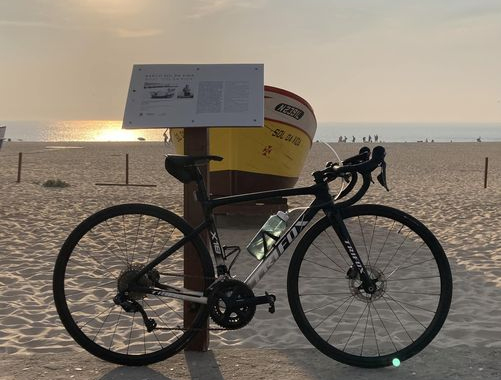

Mountain biking is an exhilarating sport that combines adventure, fitness, and a deep connection with nature. For newcomers eager to hit the trails, getting started might seem daunting, but with the right guidance, you can dive into the world of MTB (mountain biking) with confidence.
1. Choosing the Right Bike
Your mountain bike is the core of your experience, and selecting the right one is crucial. For beginners, an all-around MTB is ideal. Consider factors like the bike's frame material, suspension type, and wheel size. Trifox Bike offers high-quality carbon frames, which are lightweight and durable, making them an excellent choice for those new to the sport. Their range includes options like the Pioneer and PeakTrail Xtreme, catering to different biking needs and budgets.
2. Essential Gear
Beyond the bike, there are several pieces of gear that will enhance your ride:
- Helmet: This is non-negotiable. A helmet protects you from serious injuries and is a must-have for every ride.
- Gloves: They offer better grip and protect your hands during falls.
-Protective Eyewear: Shields your eyes from dust, debris, and UV rays.
- Hydration Pack: Staying hydrated is crucial, especially on longer trails.
- Appropriate Clothing: Opt for moisture-wicking fabrics that keep you comfortable, and consider padded shorts for added comfort.
3. Basic Maintenance Tips
To ensure your bike remains in top condition, regular maintenance is key:
- Tire Pressure: Check your tire pressure before each ride. Properly inflated tires provide better control and reduce the risk of flats.
- Chain Lubrication: Keeping your chain well-lubricated ensures smooth shifting and prolongs the life of your drivetrain.
- Brake Check: Test your brakes before every ride to ensure they're responsive.
- Regular Cleaning: Dirt and grime can affect performance. Regularly clean your bike, especially after muddy rides.
4. Safety Precautions
Safety should always be a priority:
- Trail Etiquette: Respect other trail users. Yield to uphill climbers and be mindful of hikers.
- Ride Within Your Limits: Start with trails that match your skill level and gradually progress to more challenging ones.
- Stay Aware: Always be aware of your surroundings, including other riders and potential hazards on the trail.
5. Getting Involved in the Community
Mountain biking is not just a sport; it's a community. Joining local MTB groups can provide support and camaraderie. These groups often organize rides and offer valuable tips and encouragement.
6. Upgrading as You Progress
As you become more comfortable, you might consider upgrading your components. Trifox Bike offers a range of components, from carbon wheels to forks, that can enhance your bike's performance. These upgrades can make a significant difference as you tackle more challenging trails.
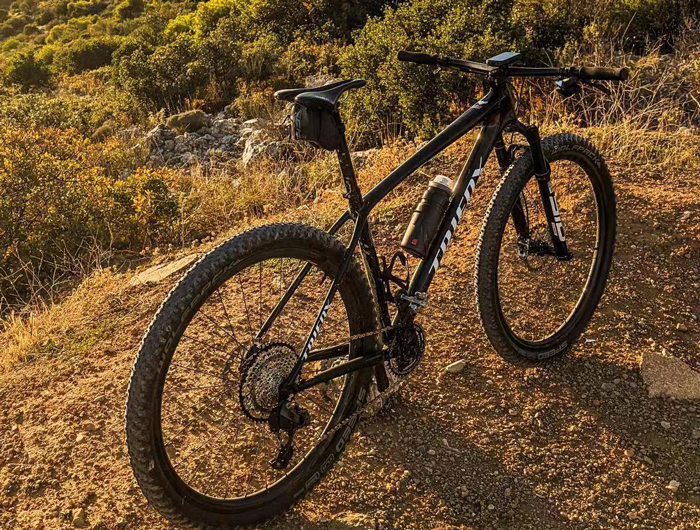
Starting your mountain biking journey is an exciting step towards endless adventures. By investing in quality gear and understanding the basics, you'll be well on your way to enjoying the thrill of the trails. Remember, every expert was once a beginner, and with each ride, you'll gain confidence and experience. Embrace the journey, stay safe, and enjoy every moment on your bike.
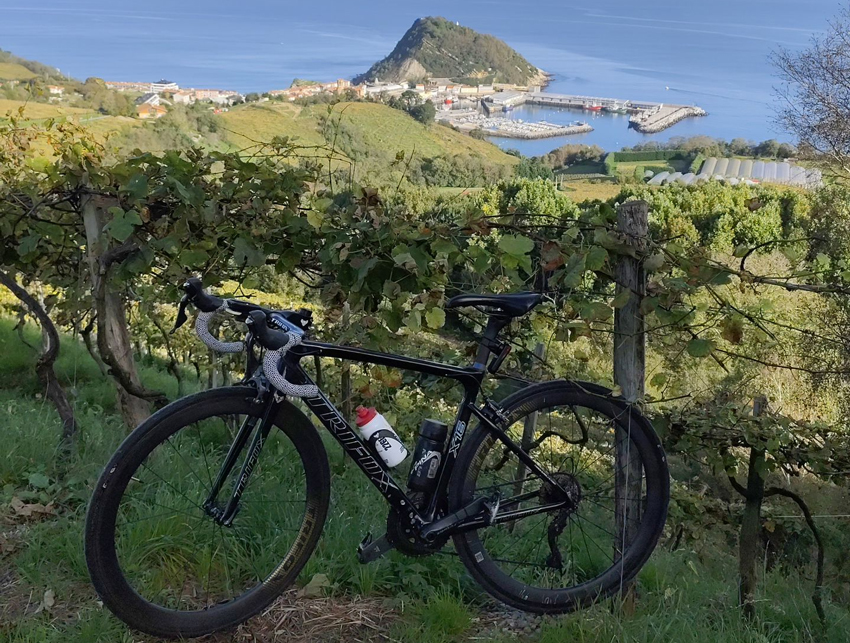
Trifox has established itself as a formidable name in the cycling world, renowned for its cutting-edge technology and innovative designs. At the pinnacle of their offerings is the Trifox X16, the brand's flagship road bike frame, which is available in two distinct versions: the X16TA and the X16QR. Both models boast remarkable features that appeal to cyclists seeking performance, durability, and aesthetic appeal.
The X16TA model features a disc brake system, providing enhanced stopping power and control, particularly beneficial in varying weather conditions. Meanwhile, the X16QR is equipped with a traditional V-brake system, catering to those who prefer the classic setup. Both frames are crafted from high-quality T800 carbon fiber, celebrated for its lightweight properties, strength, and ability to absorb road vibrations. This material ensures that each ride is not only smooth but also responsive, offering cyclists the perfect blend of comfort and speed.
One of the standout features of the X16 frames is their internal cable routing design. This thoughtful engineering choice not only contributes to a sleek and uncluttered appearance but also enhances aerodynamics, allowing for a more efficient ride. The internal routing also means less maintenance and a reduced chance of cable damage, prolonging the lifespan of the components.
Both the X16TA and X16QR are compatible with both DI2 and mechanical systems, showcasing their versatility. Cyclists can choose between electronic precision or mechanical reliability, depending on their preferences and needs. This adaptability, combined with the frame's ability to support tires up to 25mm, makes the X16 a suitable choice for a variety of cycling activities—from competitive racing to leisurely long-distance rides.
Aesthetically, the Trifox X16 frames are available in a range of color options, including matte black, chameleon blue, and red & black, allowing cyclists to personalize their rides according to their style. The visual appeal of these frames, coupled with their performance capabilities, makes them a popular choice among cycling enthusiasts.
Customer reviews further underscore the quality and performance of the X16 models. One reviewer praises the X16TA for its lightweight and stiff frame, perfect for those looking to build an affordable yet high-performing bike. Another satisfied customer highlights the seamless integration of the frame with a DI2 groupset, elevating their cycling experience with efficient and smooth gear shifts.
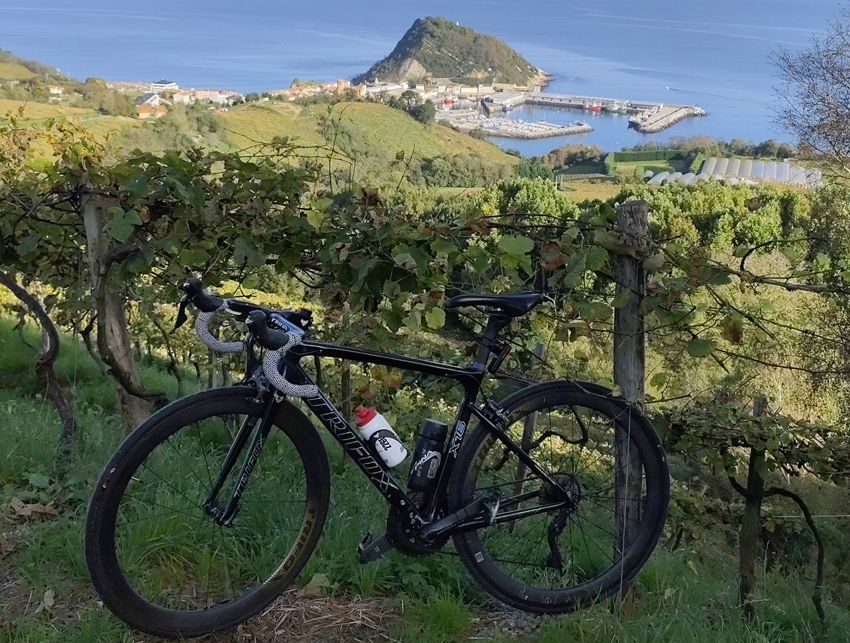
Overall, the Trifox X16 road bike frames embody a harmonious blend of innovative engineering, aesthetic versatility, and practical performance. Whether you opt for the disc brake X16TA or the classic V-brake X16QR, you are guaranteed a frame that not only meets but exceeds expectations, providing an unparalleled cycling experience.
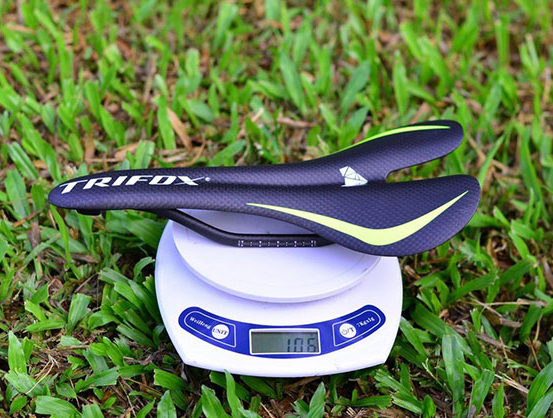
Choosing the right bike seat is crucial for any cyclist, whether you're a casual rider or a seasoned pro. It can significantly impact your comfort, performance, and overall enjoyment.
Material Matters
The CS100 is crafted from full carbon fiber, renowned for its lightweight yet robust properties. Weighing just 106 grams, this saddle can dramatically reduce the overall weight of your bike, which is beneficial for both speed and endurance. Carbon fiber also offers excellent vibration resistance, which is essential for comfort, especially on longer rides. When choosing a bike seat, opt for materials that provide both durability and cushioning to absorb shocks and reduce fatigue.
Design and Ergonomics
The design of the CS100 includes a strategic vent in the middle of the saddle. This feature not only reduces weight but also allows air to pass through, keeping you cooler and more comfortable during intense rides. Additionally, the nose shape is engineered to prevent pressure on sensitive areas, enhancing blood circulation and reducing numbness. Ergonomics play a significant role in comfort, so look for a seat that supports your riding style and body shape.
Weight and Size
At 132mm by 275mm, the CS100 is designed to offer a balance between support and freedom of movement. When selecting a bike saddle, consider your riding style. A narrower seat might be ideal for road cyclists seeking to minimize friction, while a wider seat could be better for mountain bikers needing more stability. The weight of the saddle is also critical; lighter options like the CS100 can improve your bike's overall performance by reducing resistance and enhancing speed.
Customer Insights
Feedback from users of the CS100 highlights its quality and comfort. Reviews often mention its surprising comfort despite its minimalist appearance. Dennis notes the saddle's great quality and quick delivery, while Edgardo emphasizes its lightweight nature and comfort. These testimonials confirm that the CS100 meets the demands of cyclists looking for a comfortable, high-performance seat. When choosing a saddle, consider customer reviews as they provide real-world insights into comfort and durability.
Tips for Selecting the Right Seat
1. Test Ride: Whenever possible, try different saddles before purchasing. What feels comfortable can vary greatly from person to person.
2. Consider Your Riding Posture: Your cycling position affects the type of saddle you should choose. Aggressive forward-leaning postures might benefit from a flatter saddle, while more upright positions could require additional padding.
3. Check the Rails: The CS100 features 7x7mm rails, which are standard and compatible with most seat posts. Ensure the seat you choose fits your bike's seat post.
4. Padding Preference: Some riders prefer more padding for comfort, while others opt for minimal padding to reduce weight. Consider what works best for your typical ride lengths and terrain.
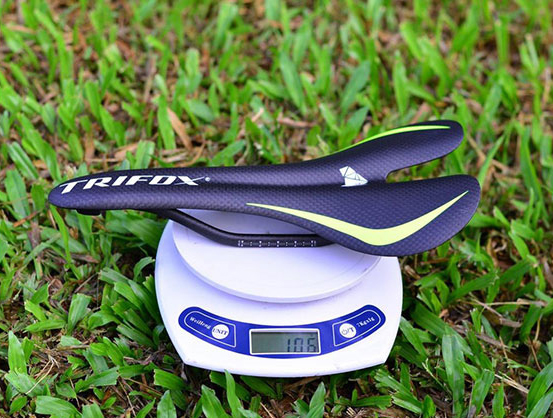
In conclusion, the perfect bike seat, like the Trifox CS100, can enhance your cycling experience by providing comfort and boosting performance. By focusing on key factors like material, design, and customer feedback, you can select a saddle that meets your needs and helps you get the most out of every ride. Whether you're racing or commuting, choosing the right seat is an investment in your cycling pleasure and efficiency.

Optimizing your ride with an ultra light road bike like the Trifox Ultra Light SF-QR 2.0 involves leveraging its standout features for peak performance.
This bike, crafted from T800 carbon fiber, offers a remarkable strength-to-weight ratio, weighing just 8.6kg. Its lightweight nature enhances speed and agility, making climbs easier and long rides less fatiguing. The carbon fiber construction also improves vibration dampening, offering a smoother ride on varied terrain.
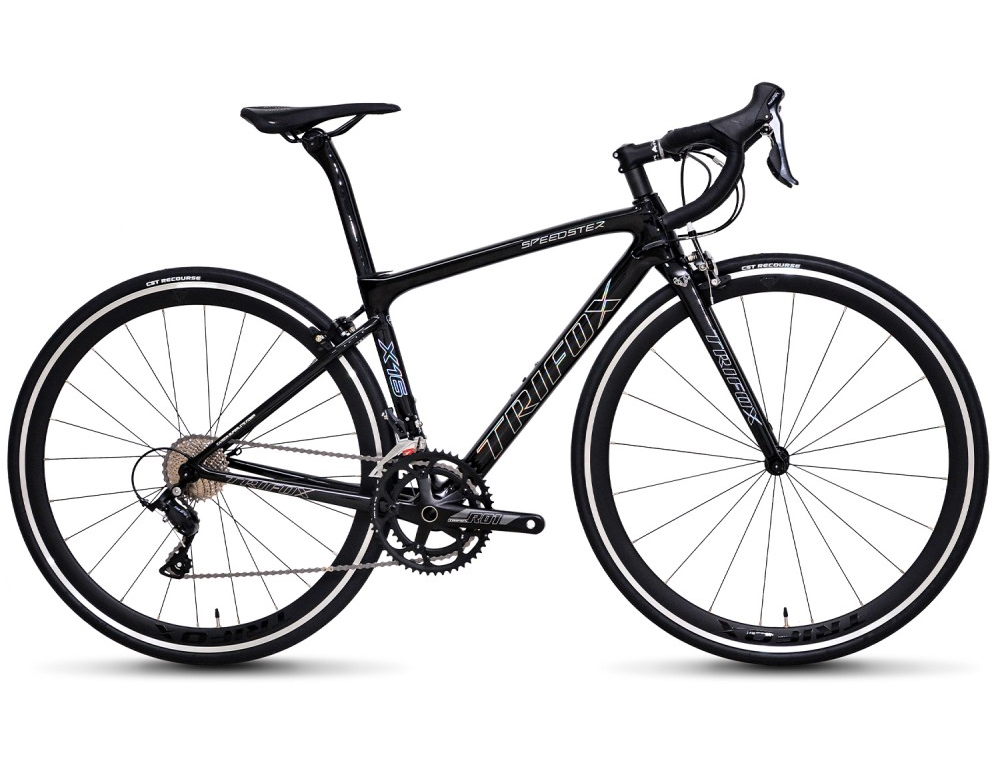
Equipped with the Shimano Sora R3000 groupset, the Ultra Light SF-QR 2.0 ensures smooth and precise shifting across its 2x9 speed setup. This efficient drivetrain allows riders to seamlessly adjust to changing inclines and conditions, maintaining optimal momentum throughout their journey.
Aerodynamic design is another key aspect, with partially internal cable routing that minimizes wind resistance and protects cables from wear. This design not only enhances speed but also contributes to the bike's sleek, clean look.
For optimal performance, regular maintenance is crucial. Check and adjust tire pressure for different road conditions, and ensure the drivetrain is clean and well-lubricated to prevent wear and maintain efficiency. Adjust the saddle and handlebar height for comfort and improved control.
Selecting the right size is vital for comfort and efficiency. The SF-QR 2.0 offers sizes from 44cm to 58cm, catering to riders from 150cm to 191cm tall. Proper sizing ensures better posture, reducing strain and enhancing power transfer.
Using an ultra light road bike like the Trifox Ultra Light SF-QR 2.0 can significantly enhance speed and efficiency, allowing you to enjoy a superior riding experience. By focusing on its features and maintaining optimal settings, you can unlock the full potential of your road biking adventures.

Choosing the perfect ultra light hardtail mountain bike for your next adventure involves understanding the key features that will enhance your riding experience.
When considering options like the Trifox SDY20, start by focusing on the frame material. This bike boasts a 29er carbon mountain hardtail frame made from T1000 carbon fiber, which is renowned for its strength-to-weight ratio. The lightweight nature of carbon frames not only makes climbing hills easier but also improves maneuverability on technical trails.
Weight is another crucial factor. The SDY20 weighs approximately 11.5 kg for a large size, making it an excellent choice for riders who prioritize speed and agility. A lighter bike allows for quicker acceleration and less fatigue over long rides, key benefits when tackling challenging terrains.
Drivetrain components are equally important. The SDY20 features a SHIMANO Deore M6100, 12-speed system, which provides smooth and reliable gear shifts. This setup is ideal for adapting to varying trail conditions, giving you the flexibility to maintain momentum whether you're climbing or descending.
Wheel specifications, such as the Trifox Alloy Mountain Bike Wheels and CST 29*2.1 tires, offer stability and control. Wider tires improve traction and handling, crucial for maintaining grip on rough surfaces.
When selecting the right size, consider your height and inseam. The SDY20 offers sizes from S to L, accommodating riders from 150 to 185 cm tall. Ensuring the bike fits well enhances comfort and control, which are vital for a safe and enjoyable ride.
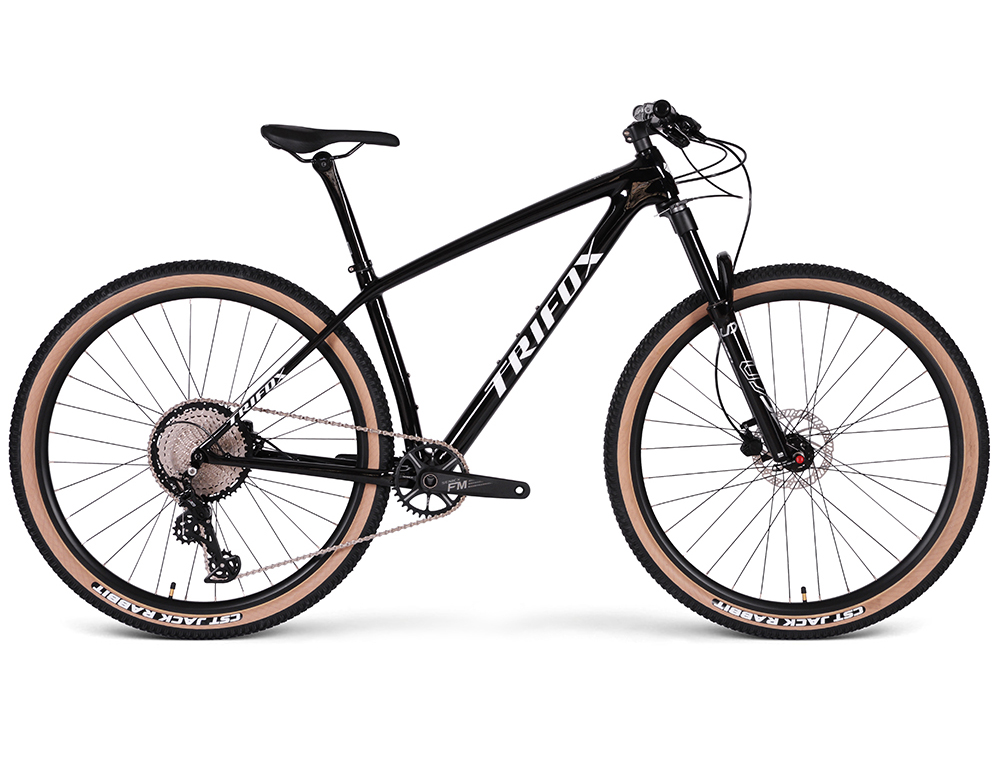
Overall, choosing an ultra light hardtail MTB with a carbon frame like the SDY20 offers numerous benefits, including enhanced performance and comfort, making it a worthy companion for your next mountain biking adventure.
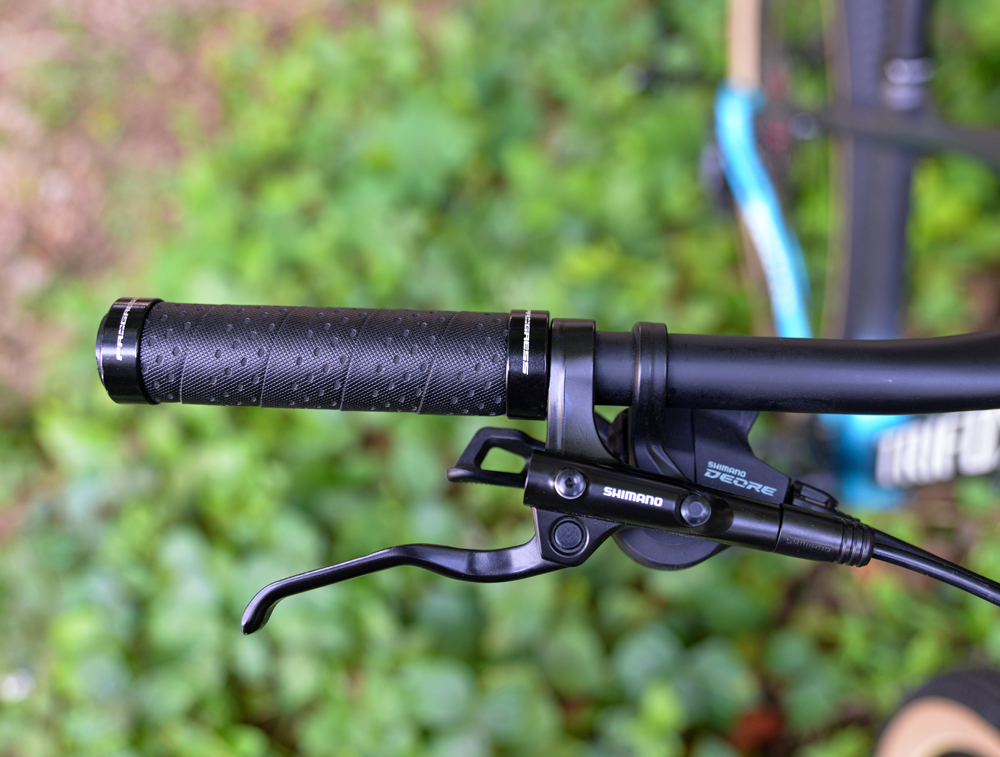
For mountain biking enthusiasts, navigating rugged trails requires not only skill but also the right equipment to ensure comfort and control. One crucial yet often underestimated component is the bike grips. The right MTB bike grips can make a significant difference in your riding experience, providing both comfort and improved handling on the trails.
Choosing the right mountain bike grips starts with understanding their impact on your ride.
High-quality grips can reduce hand fatigue and increase control, crucial for tackling varying terrain with confidence. Key features to look out for include the material, texture, and locking mechanisms that ensure the grips stay firmly in place.
Material plays an essential role in the comfort and durability of bike grips. The Trifox MBT100 grips, for example, are made from robust rubber, offering a balance of comfort and resilience. Rubber grips provide excellent cushioning, absorbing shocks and vibrations that are common on bumpy trails, thus reducing strain on your hands and wrists.
Grip texture is another critical component. The MBT100 grips are designed with anti-slip properties that ensure a secure hold even in wet or muddy conditions. This texture enhances your control over the handlebars, allowing for precise steering and better handling of your bike. Whether you're navigating tight corners or descending steep slopes, maintaining a firm grip is essential for safety and performance.
Additionally, the locking mechanism is vital for ensuring that your grips remain securely attached to the handlebars. The Trifox MBT100 features a locking system that prevents slipping or rotation, providing peace of mind as you tackle challenging trails. This feature is particularly beneficial during intense rides where stability is paramount.
When selecting MTB grips, consider your riding style and personal preferences. Factors such as hand size, riding conditions, and the type of terrain you typically encounter should influence your choice. Test different grips to find the perfect fit that offers both comfort and control.
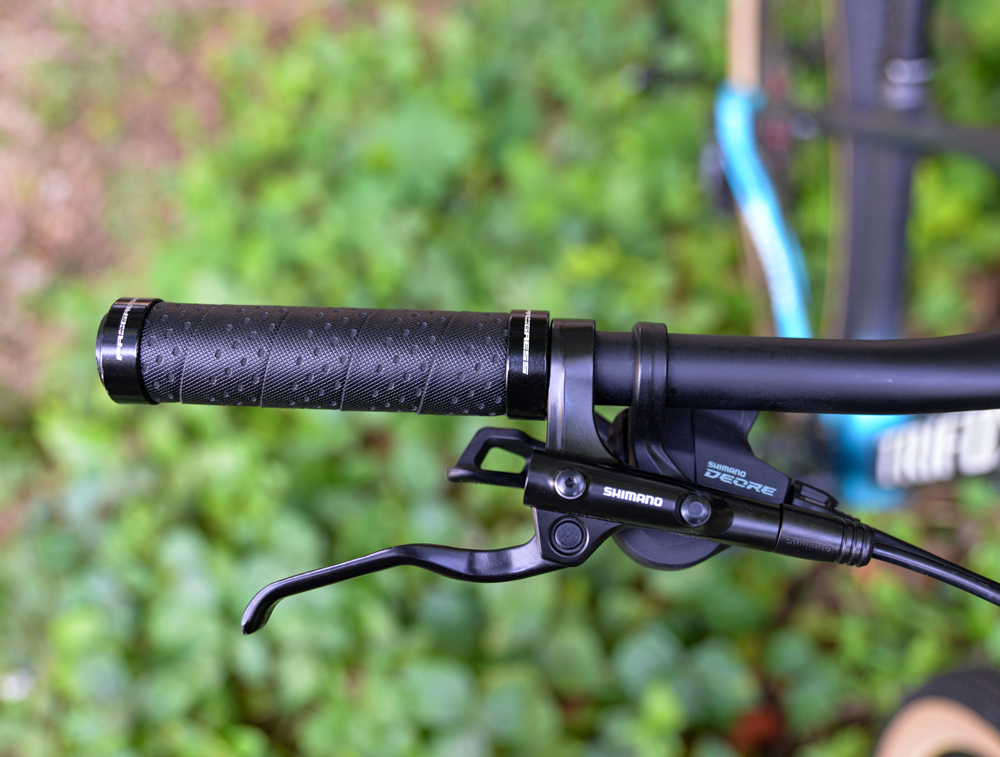
In conclusion, investing in the right MTB bike grips, like the Trifox MBT100, can greatly enhance your biking experience.
By focusing on features that prioritize comfort and control, you can ride longer and tackle trails with greater confidence. Consider upgrading your grips to enjoy improved comfort and performance on your next adventure. Happy trails!
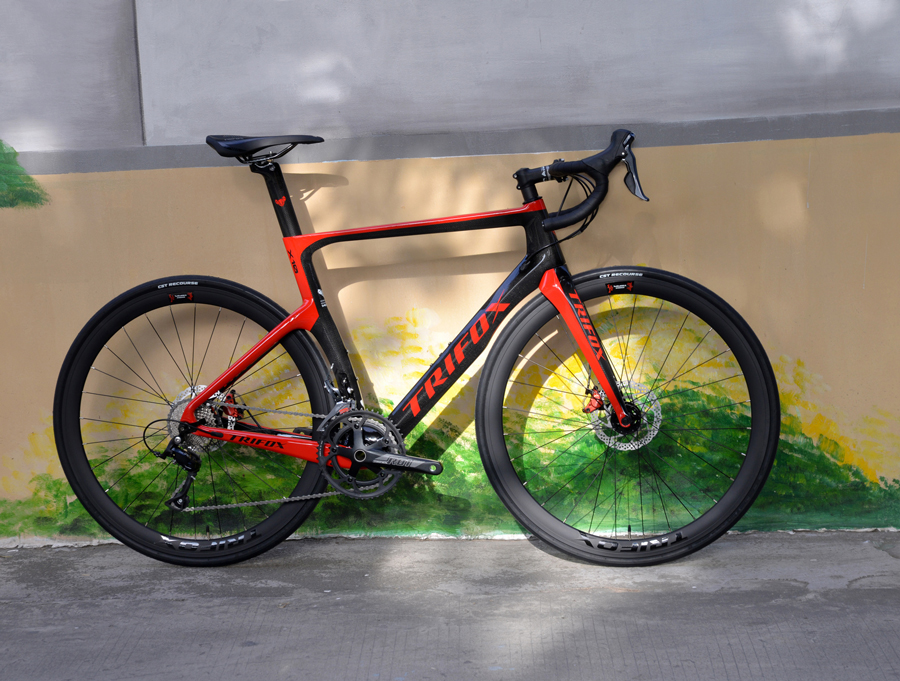
Upgrading your bike can be an exciting journey into enhancing performance and enjoyment, and choosing a road disc frameset is a strategic move for any cyclist.
Disc brakes on road bikes have revolutionized cycling by delivering superior stopping power, especially under variable weather conditions. This significant improvement in braking performance ensures you can ride confidently, whether facing wet roads or steep descents.
One of the most compelling reasons to opt for a road disc frameset is its versatility. Disc brakes provide consistent performance in both dry and wet conditions, offering peace of mind during sudden stops and enhancing safety on unpredictable terrains. This makes them an excellent choice for those who ride frequently in diverse environments, ensuring reliability and control.
The construction material of the frameset also plays a crucial role in upgrading your cycling experience. Carbon fiber frames are celebrated for their exceptional strength-to-weight ratio.
This means you get a lightweight bike that doesn’t compromise on durability. A lighter bike translates to better speed and easier handling, especially during climbs, without sacrificing stability.
Trifox’s range of carbon road bike frames exemplifies these benefits. Known for their affordability and quality, Trifox frames offer a practical upgrade option without breaking the bank. By integrating carbon fiber construction with disc brake capability, these framesets provide a comprehensive package of durability, efficiency, and enhanced safety.
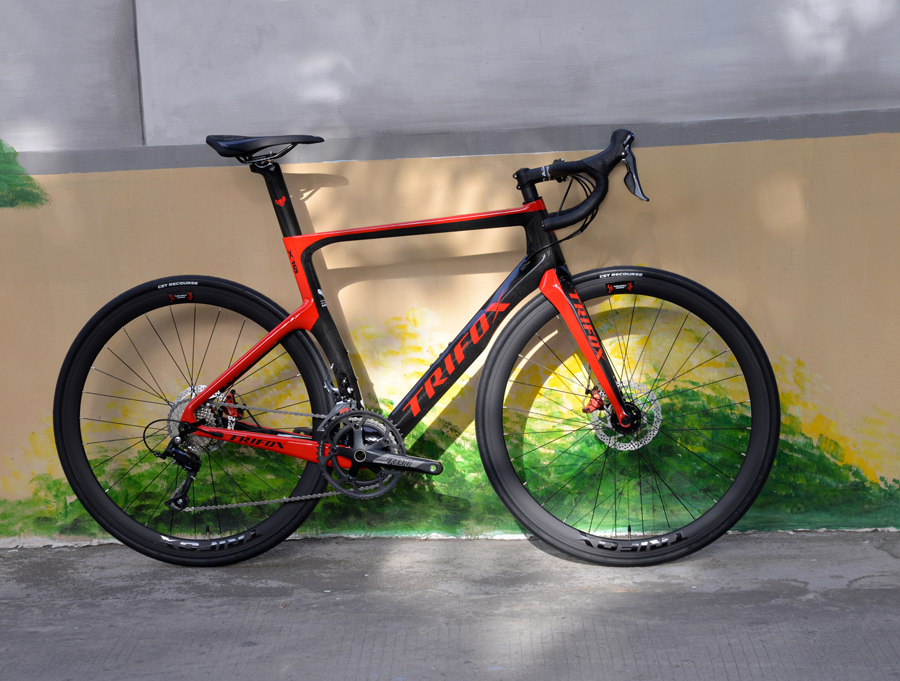
Choosing a road disc frameset from Trifox not only elevates your biking performance but also offers a smart investment in your cycling future. With improved braking, reliable performance across weather conditions, and the lightweight advantage of carbon fiber, a road disc frameset is undeniably a worthwhile upgrade for cyclists aiming to enhance their ride.
Whether you’re gearing up for competitive cycling or simply seeking a more enjoyable ride, this upgrade ensures you’re equipped for the road ahead.
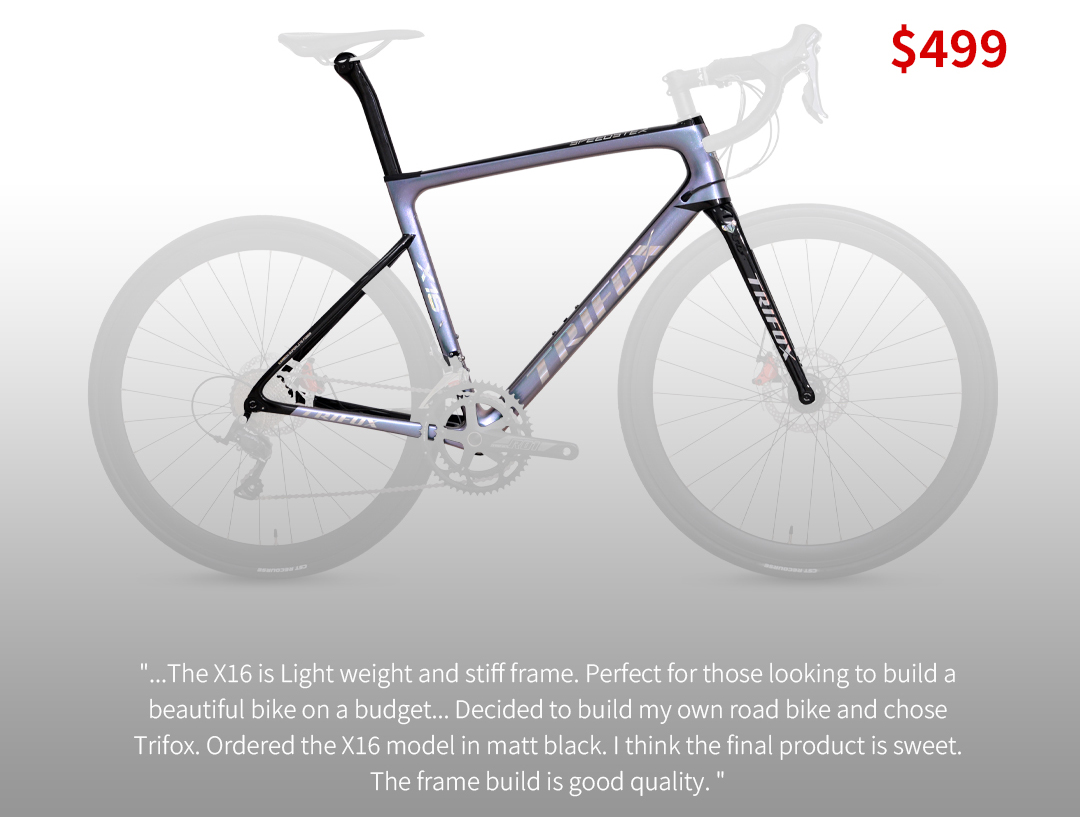
The world of cycling has evolved significantly, with advancements in technology bringing forth the era of fully carbon bicycles. These marvels of engineering offer a host of advantages that have revolutionized the cycling experience for both competitive cyclists and casual riders alike.
One of the standout features of carbon bicycles is their incredibly lightweight nature.
Made from carbon fiber, these bikes are significantly lighter than their aluminum or steel counterparts, allowing for easier handling and greater speed on the road. This reduction in weight translates into less effort required to pedal, making long rides more enjoyable and less taxing on the body.
Durability is another key benefit of carbon bicycles. Despite being lightweight, carbon fiber provides a strong and resilient frame that can withstand the rigors of various terrains.
This durability means that cyclists can tackle challenging trails with confidence, knowing their bike can handle the pressure without compromising structural integrity.
Performance benefits are at the heart of why many cyclists opt for carbon bikes. The material's ability to dampen road vibrations leads to a smoother ride, reducing fatigue and enhancing comfort over long distances. This is particularly beneficial for road cyclists who aim to push their limits in terms of speed and endurance.
In addition to personal advantages, using bicycles as a mode of transport offers significant environmental benefits. Bicycles are a zero-emission mode of transport, contributing to reduced carbon footprints and promoting a healthier planet. With increased awareness of environmental issues, choosing a bicycle over a car for short trips can make a tangible difference.
Trifox Bike, a leader in the production of high-quality carbon bicycles, exemplifies the benefits of these innovative bikes. With a commitment to precision engineering and customer satisfaction, Trifox offers products that enhance the cycling experience through superior design and technology. Their dedication to quality and sustainability makes them a trusted choice for cyclists seeking the best in carbon bike performance.
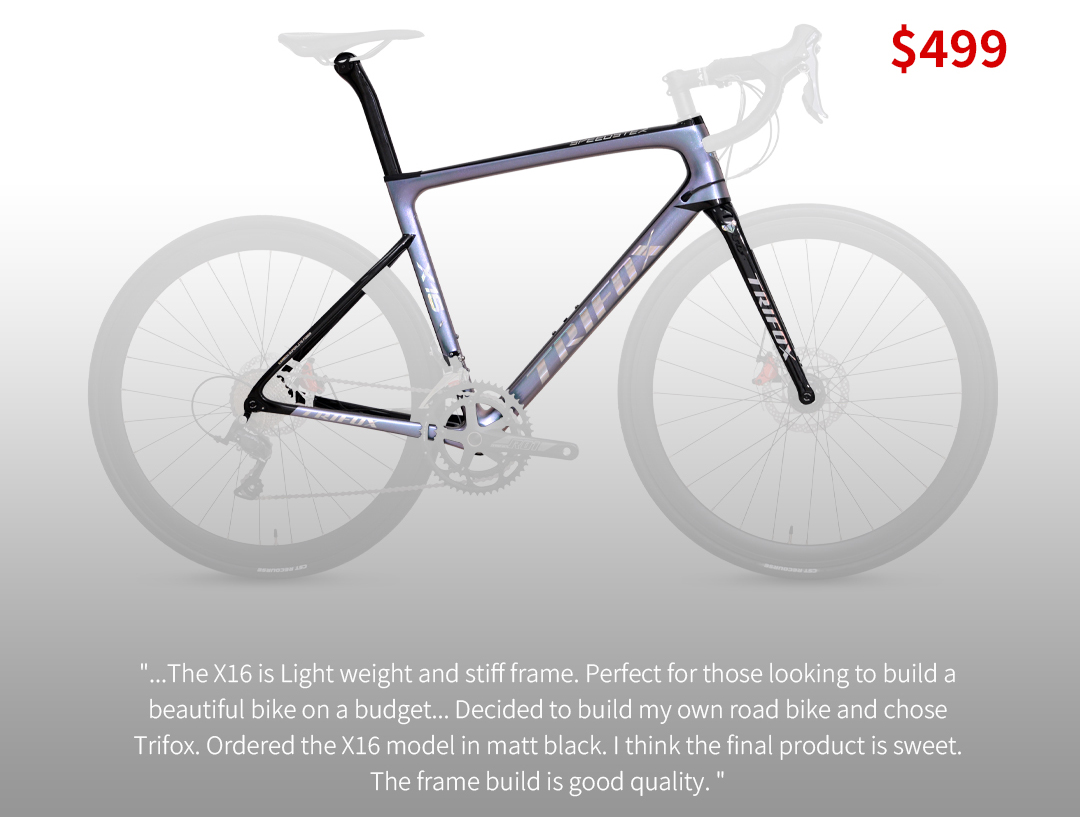
In summary, fully carbon bicycles offer unmatched advantages in terms of weight, durability, and performance, making them a worthwhile investment for any cycling enthusiast. Whether you're commuting to work or exploring new trails, a carbon bike transforms every ride into a more efficient and exhilarating journey.

























































